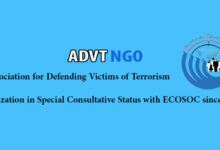Association for Defending Victims of Terrorism – WSJ reported, Former members of Afghanistan’s US-trained intelligence service and elite military units are now joining the militant Islamic State group.
“These new recruits bring to Islamic State critical expertise in intelligence-gathering and warfare techniques, potentially strengthening the extremist organisation’s ability to contest Taliban supremacy,” the report warned.
Both the United Nations and the US government have marked IS as the most extreme and violent of all militant groups in Afghanistan. The current strength of the group is not known, and estimates vary from hundreds to several thousands.
Set up in January 2015, IS recruits both Afghan and Pakistani militants and after the fall of Kabul on Aug 15, they have focused on recruiting disgruntled members of the Afghan Taliban.
IS also claimed responsibility for the Aug 26 suicide bombing at the Kabul airport that killed least 183 people, including 13 US military personnel.
After the Kabul bombing, a top US general said the United States and Taliban have had a “common purpose” in Afghanistan — fighting IS.
“We share a common purpose” and “have been useful to work with” each other, Gen Frank McKenzie, head of the US Central Command, said at a briefing in Washington. “As long as we’ve kept that common purpose aligned, they’ve been useful to work with. They’ve cut some of our security concerns down.”
The WSJ report noted that members of the now defunct Afghan intelligence service and elite military units started joining IS after they were “abandoned by their American patrons and hunted by the Taliban”.
One such recruit, an Afghan national army officer, who commanded the military’s weapons and ammunition depot in Gardez, joined IS and was killed a week ago in a clash with Taliban fighters, the report added.
The report identified six other officers of the former Afghan army who joined IS in places like Gardez, Qarabagh. The group is also active in Nangarhar and around Kabul.
“In some areas, IS has become very attractive” to former Afghan security officials and soldiers “who have been left behind”, Rahmatullah Nabil, a former head of Afghanistan’s spy agency NDS, told WSJ.
“If there were a resistance, they would join the resistance. But for the time being IS is the only other armed group,” he said.
The report noted that hundreds of thousands of former Afghan intelligence officers, soldiers and police personnel were unemployed and only “a fraction of them” returned to work under Taliban supervision.






